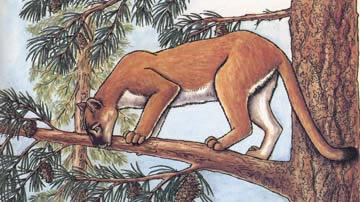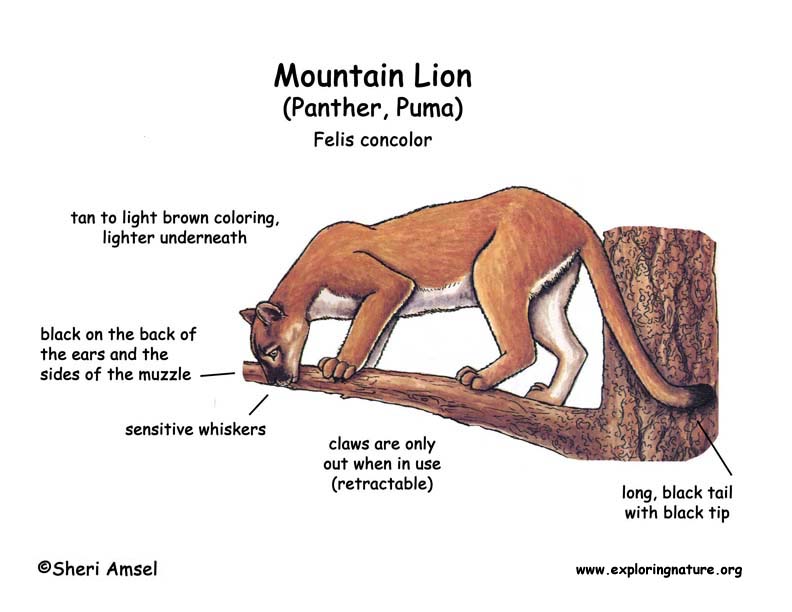

They are found from southern Canada to the southern tip of South America.
They can live in many habitats from desert scrublands to mountain forests.
They can reach up to 8 feet long and 220 lbs. Females are smaller. They are a tawny yellow to gray color. Their head is marked with black on the sides of the muzzle and on the backs of the ears. They have a long tail that helps counter balance their weight when they climb and leap.
They live alone except to mate and have a territory that can be as big as 100 square miles. Like house cats, they stalk their prey and leap on them. They drag their prey to a safe place before eating them and will bury them to feed later. Though rare, they do sometimes attack humans.
They eat white-tailed deer, mule deer, bighorn sheep and pronghorn antelope, hares, and even rodents.
Man is their only real threat.
Females are pregnant for about 3.5 months (gestation) and have 1-3 cubs.
They can live 12-15 years in the wild. They are listed as near threatened on the CITES List (International List) and endangered on the U.S. Federal Endangered Species List.
Kingdom: Animalia
Phylum: Chordata
Subphylum: Vertebrata
Class: Mammalia
Order: Carnivora
Suborder: Feliformia
Family: Felidae
Subfamily: Felinae
Genus: Puma
Species: Puma concolor
When you research information you must cite the reference. Citing for websites is different from citing from books, magazines and periodicals. The style of citing shown here is from the MLA Style Citations (Modern Language Association).
When citing a WEBSITE the general format is as follows.
Author Last Name, First Name(s). "Title: Subtitle of Part of Web Page, if appropriate." Title: Subtitle: Section of Page if appropriate. Sponsoring/Publishing Agency, If Given. Additional significant descriptive information. Date of Electronic Publication or other Date, such as Last Updated. Day Month Year of access < URL >.
Amsel, Sheri. "Mountain Lion (Panther, Puma, Cougar, Catamount)" Exploring Nature Educational Resource ©2005-2024. December 13, 2024
< http://www.exploringnature.org/db/view/383 >

